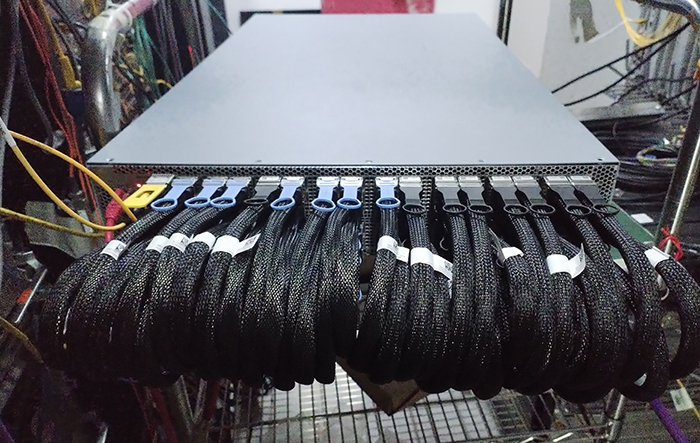H3C Collaborates with Spirent in the Successful Completion of an Industry’s First Ever Large-Scale 800G Test

The large-scale 800G test site
With AIGC driving a new wave of industrial intelligent transformation, AI large-scale models require data exchange among tens of thousands of servers and billions of parallel computations for massive data training. The growing demand for computing power puts forward stricter requirements for high-quality network connection technology. In the future, high-speed bandwidths such as 800G and 1.6T may become the main demand for large-scale training, and the performance of the switch is key to the overall network efficiency and response speed.
The test leveraged Spirent TestCenter 800G B2 Appliance. As the industry’s first 800G test platform, the B2 provides strong L1-L2 feature set combined with broad L3 protocol support over multi-rate 800G/400G/200G/100G/50G speeds, and enables testing of network switches and routers for benchmark performance and scale standards required by today’s AI/ML datacenter operators.
The B2 supports multi-rate interconnection with the switches via cables, optical fibers and other methods, and supports performance testing based on benchmark performance and routing switch protocol standards. The test data shows that the H3C S9827 series, a new generation of 800G data center switches based on CPO silicon photonics technology, has a total switching capacity of up to 51.2T, and all 64 ports achieve 100%-line speed forwarding under different traffic. Each port transmission rate can reach 800Gbps. The product integrates CPO silicon photonics technology, fully meets the high throughput demand of intelligent computing network, and is suitable for AIGC cluster or data center high-performance core switching and other business scenarios, helping to unleash optimal computing power in the AIGC era.
The performance, stability, and latency of the network are crucial for intelligent applications, such as cloud computing and remote desktops, high-frequency financial transactions, remote medical scenes, etc., which have extremely high requirements for network latency. In actual operation, a 1% packet loss rate in Ethernet will lead to a 50% performance loss in the computing cluster, so how to design a low-latency, high-throughput networking solution and improve GPU computing efficiency is crucial. After testing, the single-port transmission average delay of H3C 800G CPO silicon photonic switch is 1.085 microseconds, 20% lower than the previous generation product, reaching the industry-leading level. The product uses CPO opto-electronic encapsulation technology to significantly shorten the high-frequency electrical signal interconnection distance from the switch chip to the optical module, helping to increase GPU computing efficiency by 25% within a single AIGC cluster.
“We were pleased to support H3C in verifying multiple breakthrough technology solutions for 800G Ethernet,” said Andrew Liu, VP of Sales for Spirent in Greater China. “We have developed a comprehensive, end-to-end 800G testing suite that leverages decades of experience in Ethernet testing. This latest positive 800G test validating the reliability and high performance of H3C S9827, H3C’s 800G CPO silicon photonic switch series, will help ensure successful deployments of this complex new technology and reliable high-speed networks to meet future demand.”
Yutao Li, Vice President of Network Product Line of H3C and General Manager of Switch Product Line, said that “The 800G high-performance switch, bolstered by CPO technology, will provide higher network capacity for cutting-edge applications such as AIGC and large-scale model training, paving the way for further improvement in the scale and computing power of computing clusters. This joint test fully reflects H3C’s leading technical strength in the field of digital infrastructure. In the future, H3C will also help customers from various industries to comprehensively boost Ethernet performance, fully unleashing the value of computing power.”


